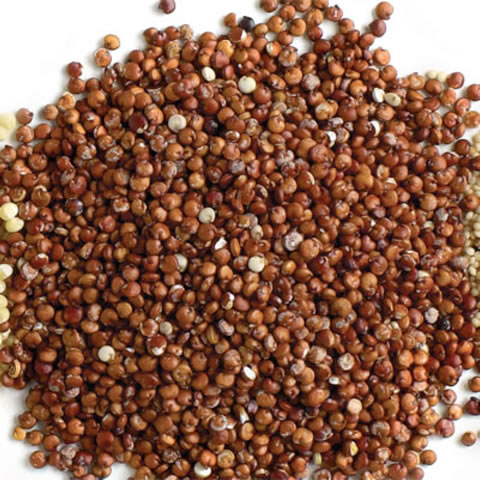News and Notes from The Johnson Center
Family and Food: Eat Like An Inca
JCCHD | Tue, April 17, 2012 | [Family and Food][Healthcare]In the coming weeks, we will be highlighting healthy, nutrient dense, whole foods to broaden and bolster the quality of your family’s diet.
This week, the focus is on Quinoa.
Quinoa, pronounced “keen-wa”, is an ancient grain having been around for thousands of years as a dietary staple in many cultures. However, quinoa is not truly a grain, but a seed of the Goosefoot plant that has been cultivated in the Andean Altiplano regions of Bolivia and in other parts of South American for over 5000 years. There is evidence that wild forms may have even been present for more than 9000 years. Quinoa was not only a staple of the Incas, but was honored and revered as the mother of all grains.
Quinoa can withstand very harsh growing conditions and is a hearty and resilient crop – with the ability to thrive over 10,000 feet above sea level. It can grow not only at high altitudes, but also can survive arid heat, frost, and drought. Quinoa was such an important staple in Inca culture that ceremonies and rituals were conducted in association with its cultivation, harvest, and consumption. At the first planting of the season, a golden tipped shovel was used to plant the first seed. It was these planting celebrations (which were clearly seen as non-Christian in nature), which prompted the banning of quinoa by the Spanish when they invaded the area in the 16th century. The Incas were then forced to cultivate potatoes and corn in place of quinoa. However, wild species of quinoa still survived and were secretly cultivated.
In the past decade, quinoa has become increasingly popular. To date, only 3 out of over 120 species are currently cultivated for consumption. Currently, the majority of the world’s quinoa is still produced in the Andes regions of South America, but can also be found in areas such as Colorado.
Quinoa has also gained popularity due to the fact that it is a nutritious, gluten free grain alternative and has a wide variety of uses. It can be consumed as a grain, a milk, in pasta form, in flour form, and can also be used as a hot or cold cereal option.
Quinoa is superior in nutrition to other seeds and grains for a number of reasons:
• It contains a higher protein content than others (16.2% - quinoa; 14% wheat; and 7.5% - rice).
• It is a significant source of iron, phosphorus, vitamin E, many B vitamins
• It is even a healthy source of unsaturated fats
If you have interest in exploring this “ancient grain” for your own consumption, start simply. Quinoa can be prepared easily and quickly as a hot breakfast cereal.
Try this nutrient packed morning meal option:
Hot Breakfast Cereal: Bring 2 cups water to a boil, add 1 cup quinoa, reduce heat, simmer 5 minutes. Add 1/2 cup thinly sliced granny smith apples, 1/3 cup raisins or other dried fruits, 1/2 tsp cinnamon and simmer until water is absorbed. Serve with a milk substitute and sweeten to taste with raw honey.
Here are more kid-friendly quinoa recipes for you to try out:
Quinoa Pudding
2 cups quinoa, cooked
1/2 cup raisins
3 cups milk substitute
1/3 cup honey
1/2 cup almonds, or walnuts, ground
1/2 tsp cinnamon
1/2 tsp lemon, or orange rind, grated
1 tsp lemon juice
1/2 cup shredded coconut
1 tsp vanilla
3 eggs, beaten
1/8 tsp salt
1 tbsp melted coconut oil
Combine all ingredients. Pour into greased baking dish or greased individual custard cups. Bake in 350-degree oven until set, about 45 minutes. Serve hot or cold, topped with coconut yogurt or apple juice. Serves 4-6.

Red Quinoa Salsa
1 cup red quinoa
2 cups water or broth
Cilantro to taste, chopped
Jalapeño pepper to taste, chopped
1 large ripe tomato, chopped
1 small red onion, chopped
Add quinoa to 2 cups of water. Cover and simmer 10-15 minutes, until all the water is absorbed. Let cool to room temperature. Mix all ingredients together. Chill at least 30 minutes to allow flavors to blend.
Recipes adapted from www.quinoa.net.
References:
http://www.quinoa.net/
http://www.grain-free-gluten-free.com/quinoa-history.html
http://trevor-ellestad.suite101.com/quinoa-a25458



